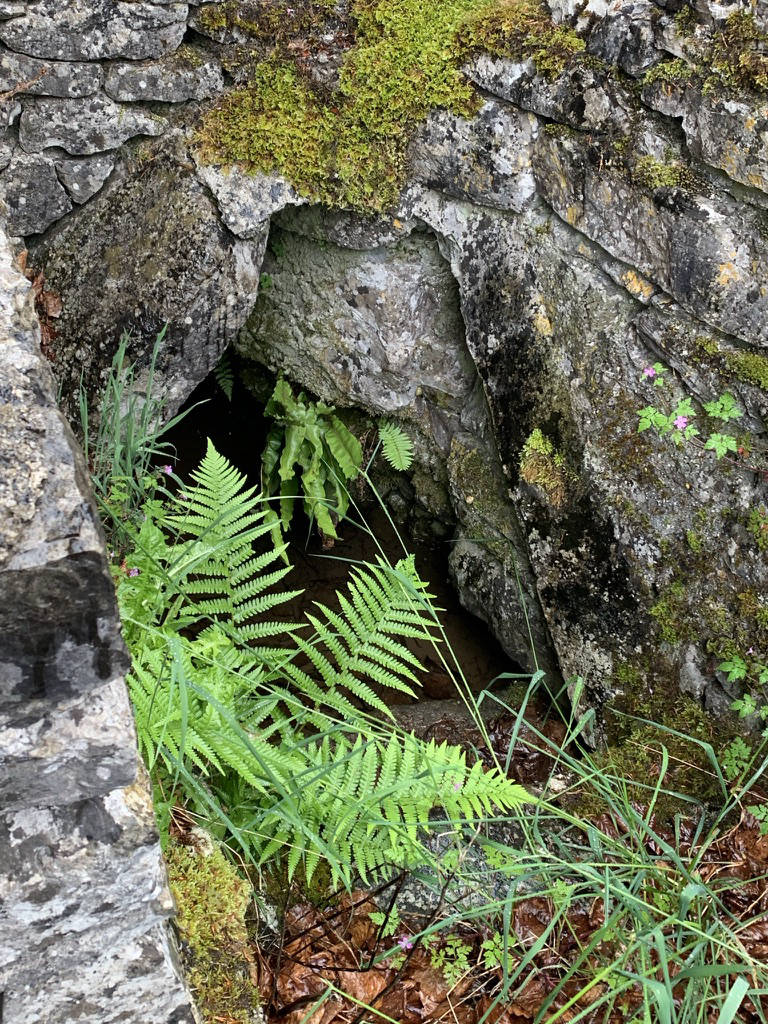There is some debate as to how Tideswell got its name. One theory is that the name originates from a Saxon chieftain named Tidi whose burial ground is at Tideslow to the north of the village.
The name was spelt in a variety of different ways up to the 17th century. In the Domesday Book the village is referred to as “Tidesuuelle” and is listed as part of the enormous parish of Hope, which was given by William the Conqueror to his illegitimate son (William Peveril) who occupied Peveril Castle at nearby Castleton.
Another theory for how Tideswell got its name is that it stems from a “tiding well” situated in the north of the village. This well was sometimes referred to as the “Ebbing and Flowing Well” and allegedly ebbed and flowed like the tides.
In the Middle Ages, Tideswell was a market town that was famous for lead mining. You can still see evidence of lead mines in the hamlet of Windmill, just outside of Tideswell on the road to Bradwell. The Tideswell lead miners were well known for their strength and were much prized by the military authorities. George III is reported to have remarked when a platoon of Tideswell miners were paraded before him in London –
“I don’t know what effect these men will have on the enemy, but by God they frighten me!”

In 1207 Tideswell was granted to Thomas Armiger, and was host to the ‘Great Courts’ of the Royal Forest of the Peak during the reign of King Edward I. The village of Peak Forest, about 4 miles east of Tideswell was a focal point for these Great Courts – and some of the original forest layout still exists there. Records show that Edward I, Edward III and Henry IV all visited Tideswell at various times during their reigns.
In 1251 Tideswell was granted a market charter and became a principle market for wool, lead and local produce, which led to a rapid growth in population and prosperity. This early prosperity is demonstrated by its magnificent medieval church, dedicated to St. John the Baptist and often referred to as the ‘Cathedral of the Peak’, which was started and completed in the 14th century – with work halting for the period of the Black Death, in which the the nearby village of Eyam (also referred to as the “Plague Village”) played such a key role. No major external alterations have been made to the church since 1400 and it looks very much the same today as it did 600 years ago. Famous for its brasses and wood carvings but a local carpenter, the church is well worth a visit.
Behind the church are the buildings of the former Robert Pursglove Grammar School which was founded in 1559 by the distinguished churchman and educationalist. Close by are Eccles Hall and Blake House, both acquired in the 19th century to accommodate staff and students at the school. The school was finally closed in 1927 and its former ‘halls of residence’ are now the Tideswell Library and community centre.
The textile industry developed in Tideswell around the 19th century when small factories were involved in the hand weaving of silk scarves and handkerchiefs for the Cheshire silk industry, whilst the nearby mills at Cressbrook and Litton produced cotton. The mills were notorious for the appalling way they treated their young labour force, which comprised mainly pauper and orphaned children. They were frequently transported here from the south of England and had to endure long hours, meagre food, cramped accommodation, beatings and general abuse by the owners. Many died as a result of the harsh treatment they received, and the bodies were buried away from the mill in an attempt to hide the truth about what went on. Litton Mill, in particular, has a gruesome history – and some people today report ghostly goings on!
Wakes Week and Well Dressings
Tideswell has celebrated Wakes Week for over 750 years – accompanied by the tradition of Well Dressing. Wakes Week starts the Saturday nearest the saints’ day for St John the Baptist – usually late June.
Well dressings are made by making a picture from flowers, leaves and a variety of natural objects, inserted into a panel of clay. Before work can begin, the clay is packed into a shallow frame and left to soak for a few days, generally in a stream, river or village pond. The whole village comes together to create various well dressings (four at last count) and these are displayed around the village from very early on the first Saturday of Wakes Week.
Wakes Week itself is a week of festivities – including the crowning of the Wakes Royalty, a traditional torchlight parade featuring the Tidsa Brass Band (who play a unique tune called the Tideswell Processional), and the appearance of a mummers group called the Tidsa Guizers. The Guizers perform a local mummers’ play known as Tidza Saw Y’eds. This recounts the tale of a Tideswell farmer whose cow gets her head stuck in a gate. The farmer tries to solve the problem by sawing off the cow’s head but then a doctor comes along, sews the animal’s head back on and she is miraculously restored to life. The Guizers also traditionally recite the local ballad known as The Drunken Butcher of Tideswell


